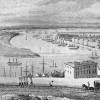
Carolyn W. de la L. Oulton, “‘Coquetting amid incredible landscapes’: Women on the River and the Railway”
The opening of the first direct railway line from London to the Kent coast in 1862 challenged traditional dichotomies between town and country, and contributed to a growing nostalgia associated with the river. Fin-de-siècle writers used the apparent opposition between rail and river, city and country, to ask new questions about the place of women in a rapidly changing world; the transition to a new century further strained the traditional dichotomy between feminised pastoral and masculinised industrial, a tension reflected in the problematic portrayal of rail and water in the work of E. Nesbit.

Lara Kriegel, “On the Death—and Life—of Florence Nightingale, August 1910”
This essay examines the death, and the life, of Florence Nightingale, the great nursing heroine of the Crimean War. An eminent Victorian, Nightingale passed away at the ripe old age of ninety in 1910, at a time when Britain was witnessing great internal strife and facing looming international tension. By that moment, the Crimean War was a thing of the distant past. Even so, Nightingale’s death served as a national tonic. It allowed mourners to rekindle the myths of Nightingale’s lifetime that had unified a ravaged nation in the wake of the Crimean War. Nightingale’s most important reforming efforts, which included nursing education, army improvement, and sanitary reform, both in Britain and in India, would postdate the Crimean War. However, the image of a young Nightingale ministering to the troops in the Crimea would remain the dominant one, not just in her life, but at her death as well. As it assesses the death and life of Nightingale, this essay focuses on two moments of celebrity and mythmaking in the long career of the heroine: the making of her legend in the Crimea and its resurrection at her death. It follows earlier literature, both generated during the nineteenth century and written by those who study it, establishing Nightingale as the avatar of Victorian womanhood. Accordingly, it seeks to understand Nightingale’s passing as a belated death knell to the Victorian age.
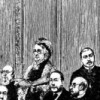
Patricia Rigg, “Gender and Politics in London School Board Elections: Augusta Webster, Helen Taylor, and a Decade of Electoral Battles”
Augusta Webster’s service on the third London School Board 1879-1882 was preceded by a campaign fraught with attempts to deter her from proceeding through the election process. Mentored in August of 1879 by Helen Taylor, the stepdaughter of John Stuart Mill, Webster successfully attained a seat on the Board despite a male consortium of Board members determined to exclude women from this form of public office. The intrigue against her unfolds in the press and in correspondence archived in the Mill Taylor Collection at the London School of Economics. These documents reveal attempts to make her step down as a candidate in order to allow the four men of the previous Board to continue as a consortium for the district of Chelsea. She was accused of selfish ambition, of costing the district money that would be wasted when her inevitable defeat came about, and of impeding the work that could only be done effectively by men. Her success in this election and in the election of 1885 did not mitigate similar problems when she ran for a seat on the Board for the third time in 1888. Women candidates for Board seats were fewer in number than male candidates, and, it is hinted in the press, she failed to retain her seat as a result of her determination to improve the education available to girls and the salaries of women teachers and teaching assistants.
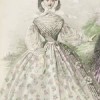
Rebecca N. Mitchell, “15 August 1862: The Rise and Fall of the Cage Crinoline”
First introduced to England by France’s Empress Eugénie in the late 1850s, the cage crinoline signaled a new era in fashion, reaching peak popularity (and peak circumference) in the early 1860s. While the garment has often been understood as a symbol of a repressive patriarchal order intent on confining women, contemporary reporting shows that it was regarded instead as a potentially threatening tool of emancipation. It replaced layers of heavy petticoats with a light and flexible alternative, offering women greater mobility and comfort, and the proportions of the skirts obviated the need for tight-laced corsets. What is more, donning crinoline allowed women to assert physical space in the public sphere, their voluminous skirts forcing men to the margins of the sidewalk or the omnibus—at least according to complaints. Perhaps the most pernicious quality of crinoline, though, was its potential to hide things from the male gaze: bad ankles or smuggled goods might be hidden by the cage, but the risk of concealed pregnancy loomed largest. Reports of death by crinoline fire were matched in their fevered pitch by warnings that crinoline sharply increased rates of infanticide. The range of Victorian responses that accrued around the fashion demonstrates that it was not simply a tool for unilateral oppression or reducible to the manifestation of empty, thoughtless vanity.
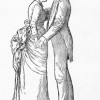
Cheryl A. Wilson, “The Arrival of the Waltz in England, 1812”
The arrival of the waltz in England changed both the experience of participating in the ballroom and the cultural impact of Victorian social dance.

Erika Rappaport, “Object Lessons and Colonial Histories: Inventing the Jubilee of Indian Tea”
The fifty-year Jubilee of Indian tea was celebrated in the Spring and Summer of 1887, coinciding precisely with Queen Victoria’s Golden Jubilee. This Jubilee had nothing to do with Victoria per se, but rather the commercial anniversary invented Indian/Ceylon tea as an icon of imperial Britishness. Industry leaders used 1887 to highlight specifically two key events in tea’s commercial and imperial history, the first moment tea arrived in Britain from Assam (1837) and the first time (April 1887) that tea from both India and Ceylon surpassed imports from China. They explained the later development by arguing that Britons had learned to appreciate modern industrial production and plantation agriculture more than old-fashioned and dirty Chinese modes of production. The Jubilee thus marked publicly how and when tea became a mass-produced and consumed imperial product.

Terry F. Robinson, “National Theatre in Transition: The London Patent Theatre Fires of 1808-1809 and the Old Price Riots”
The years 1808-1809 mark a major period of transition in English National Theatre. In the space of just a few months, London’s two patent playhouses—the Theatres Royal Covent Garden and Drury Lane—burned to the ground. The devastation was total and complete. This article tells the story of the two theatre fires and explores their economic, political, and cultural repercussions, direct and indirect, including the reconstruction of Covent Garden and Drury Lane, the Old Price Riots, and the career dénouements of Richard Brinsley Sheridan, John Philip Kemble, Sarah Siddons, and Dorothy Jordan. In the process of providing a historical and graphic overview, it proposes that the London Theatre fires of 1808-1809 not only created significant professional and financial turmoil but also helped to engender a shift from an eighteenth-century to a nineteenth-century theatrical paradigm.

Heidi Kaufman, “1800-1900: Inside and Outside the Nineteenth-Century East End”
This essay examines depictions of one of the infamously well-known region of London called “The East End.” Scholarly and popular discussions of this part of the city have been dominated by texts emphasizing the East End’s seedy or sensational social and economic features. In particular, popular writing has focused on the history of poverty, crime, and resident “alien” or immigrant groups living in the East End. While such stereotypes were often loud in their sensationalism, and while they often overpowered competing narratives, this essay makes the case for reading them alongside a range of narratives about the East End, many of which were produced by residents of this part of London. In what follows, I consider a mix of insider and outsider lenses, of well-known and lesser-known voices that produced a varied range of depictions of the nineteenth-century East End. In the process, I argue that the East End ought not to be characterized as simply a site of crime and poverty. To understand this important part of London, we must instead examine a fuller range of voices emerging from disparate, often competing, perspectives. Through this mix, we can begin to register the East End’s economic, cultural and social diversity witnessed and described in discordant ways by visitors and residents alike.
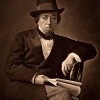
Robert O’Kell, “On Young England”
Young England was a short-lived social and political movement that developed from the altruistic ideas of a small parliamentary ginger group within the Conservative Party in the 1840s. At the core of the movement were Benjamin Disraeli (their acknowledged leader), Lord John Manners, George Sydney Smythe and Alexander Baillie Cochrane, all of whom were appalled at the state of party politics, class conflict, and the economic and moral condition of Victorian England’s poor. Their dissatisfaction with Sir Robert Peel’s leadership of the Party gained popular momentum when, between 1844 and 1847, Disraeli published a trilogy of novels that embodied both devastating satirical attacks on traditional Tory politics and an idealistic, nostalgic vision of a revitalized aristocracy motivated by social duty.
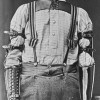
Sue Zemka, “1822, 1845, 1869, 1893, and 1917: Artificial Hands”
The manufacture of artificial limbs was a Victorian growth industry, requiring an assortment of qualifications: mechanical skills, sympathy for the disabled, commercial ambition, a willingness to exaggerate in advertising, and faith in technological progress. This essay explores nineteenth-century designs for artificial hands, focusing on the stories they relay about the relationships between the people who needed artificial hands and the people who made them. These relationships concertize and personalize the complex factors at play in the history of Victorian hand prostheses: philosophies of embodiment, the hand’s role in these philosophies, the experiences of people without a hand or hands, and the impact of technology on all three.
